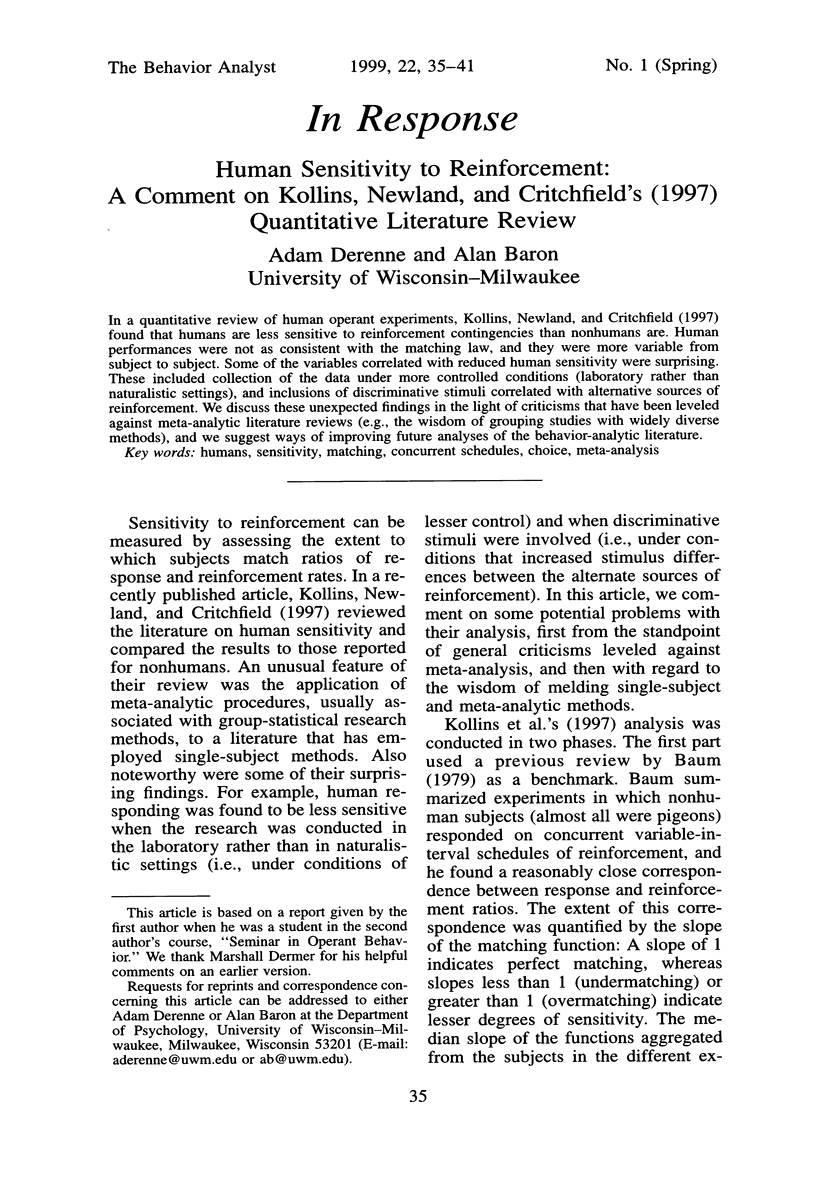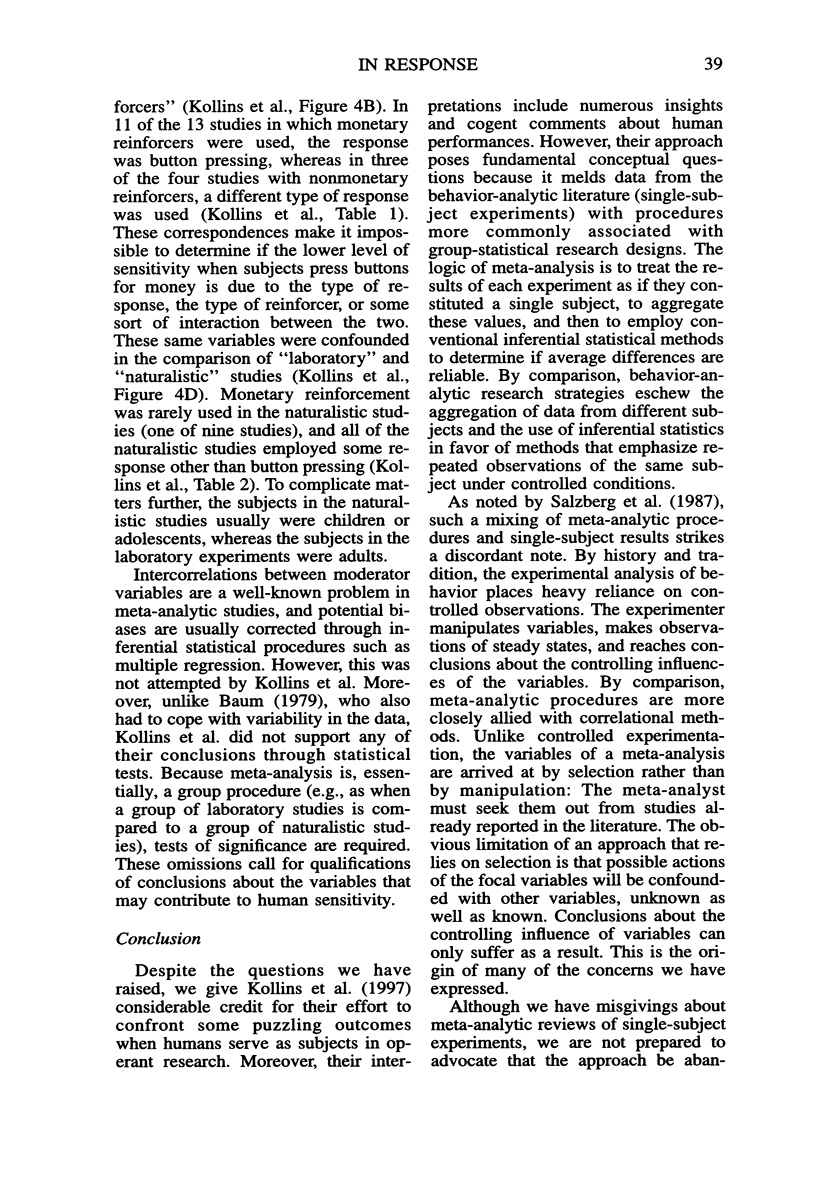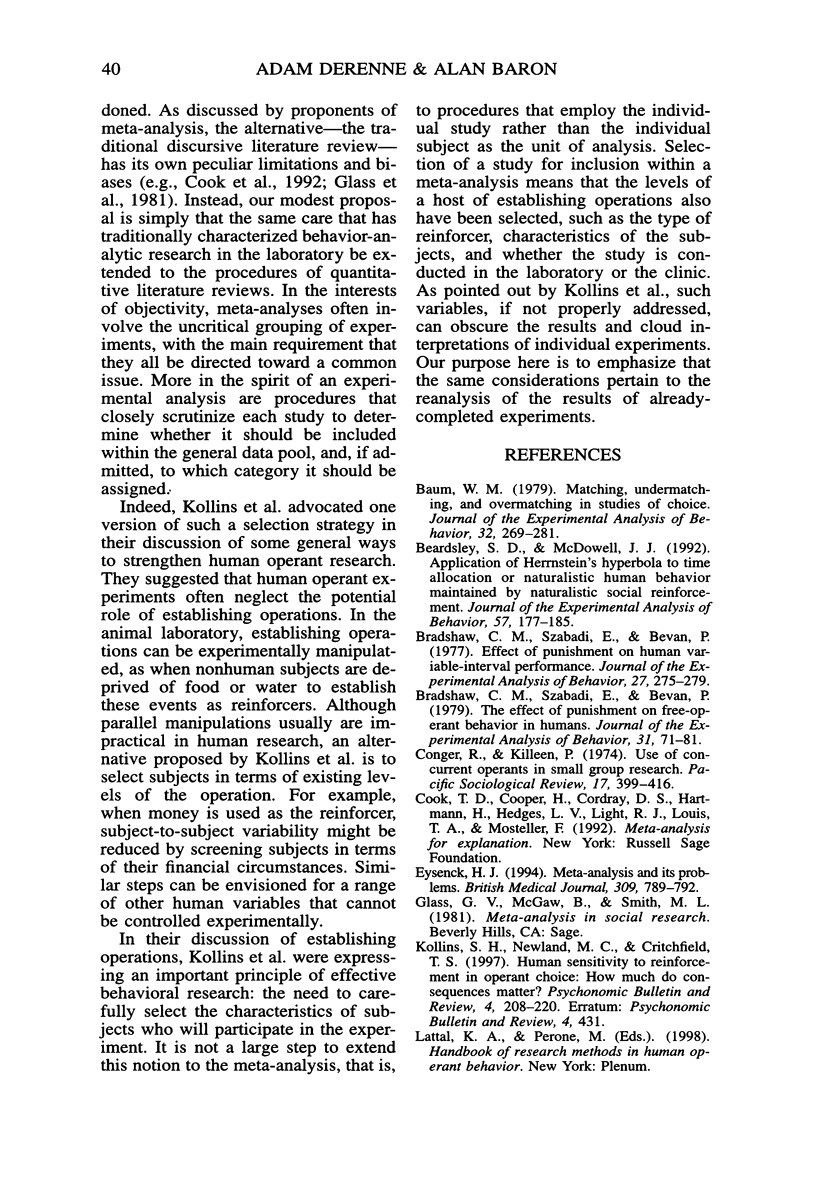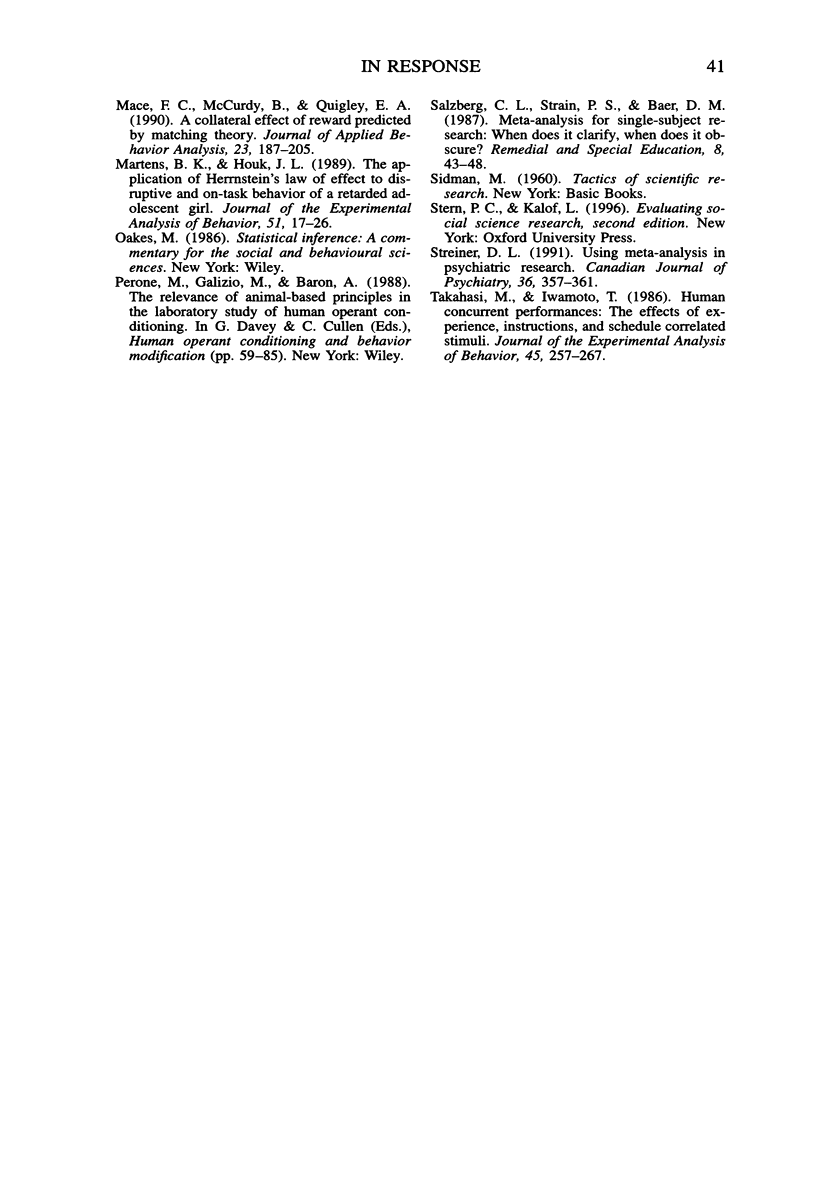Abstract
In a quantitative review of human operant experiments, Kollins, Newland, and Critchfield (1997) found that humans are less sensitive to reinforcement contingencies than nonhumans are. Human performances were not as consistent with the matching law, and they were more variable from subject to subject. Some of the variables correlated with reduced human sensitivity were surprising. These included collection of the data under more controlled conditions (laboratory rather than naturalistic settings), and inclusions of discriminative stimuli correlated with alternative sources of reinforcement. We discuss these unexpected findings in the light of criticisms that have been leveled against meta-analytic literature reviews (e.g., the wisdom of grouping studies with widely diverse methods), and we suggest ways of improving future analyses of the behavior-analytic literature.
Keywords: humans, sensitivity, matching, concurrent schedules, choice, meta-analysis
Full text
PDF






Selected References
These references are in PubMed. This may not be the complete list of references from this article.
- Baum W. M. Matching, undermatching, and overmatching in studies of choice. J Exp Anal Behav. 1979 Sep;32(2):269–281. doi: 10.1901/jeab.1979.32-269. [DOI] [PMC free article] [PubMed] [Google Scholar]
- Beardsley S. D., McDowell J. J. Application of Herrnstein's hyperbola to time allocation of naturalistic human behavior maintained by naturalistic social reinforcement. J Exp Anal Behav. 1992 Mar;57(2):177–185. doi: 10.1901/jeab.1992.57-177. [DOI] [PMC free article] [PubMed] [Google Scholar]
- Bradshaw C. M., Szabadi E., Bevan P. Effect of punishment on human variable-interval performance. J Exp Anal Behav. 1977 Mar;27(2):275–279. doi: 10.1901/jeab.1977.27-275. [DOI] [PMC free article] [PubMed] [Google Scholar]
- Bradshaw C. M., Szabadi E., Bevan P. The effect of punishment on free-operant choice behavior in humans. J Exp Anal Behav. 1979 Jan;31(1):71–81. doi: 10.1901/jeab.1979.31-71. [DOI] [PMC free article] [PubMed] [Google Scholar]
- Eysenck H. J. Meta-analysis and its problems. BMJ. 1994 Sep 24;309(6957):789–792. doi: 10.1136/bmj.309.6957.789. [DOI] [PMC free article] [PubMed] [Google Scholar]
- Mace F. C., McCurdy B., Quigley E. A. A collateral effect of reward predicted by matching theory. J Appl Behav Anal. 1990 Summer;23(2):197–205. doi: 10.1901/jaba.1990.23-197. [DOI] [PMC free article] [PubMed] [Google Scholar]
- Martens B. K., Houk J. L. The application of Herrnstein's law of effect to disruptive and on-task behavior of a retarded adolescent girl. J Exp Anal Behav. 1989 Jan;51(1):17–27. doi: 10.1901/jeab.1989.51-17. [DOI] [PMC free article] [PubMed] [Google Scholar]
- Streiner D. L. Using meta-analysis in psychiatric research. Can J Psychiatry. 1991 Jun;36(5):357–362. doi: 10.1177/070674379103600508. [DOI] [PubMed] [Google Scholar]
- Takahashi M., Iwamoto T. Human concurrent performances: The effects of experience, instructions, and schedule-correlated stimuli. J Exp Anal Behav. 1986 May;45(3):257–267. doi: 10.1901/jeab.1986.45-257. [DOI] [PMC free article] [PubMed] [Google Scholar]


